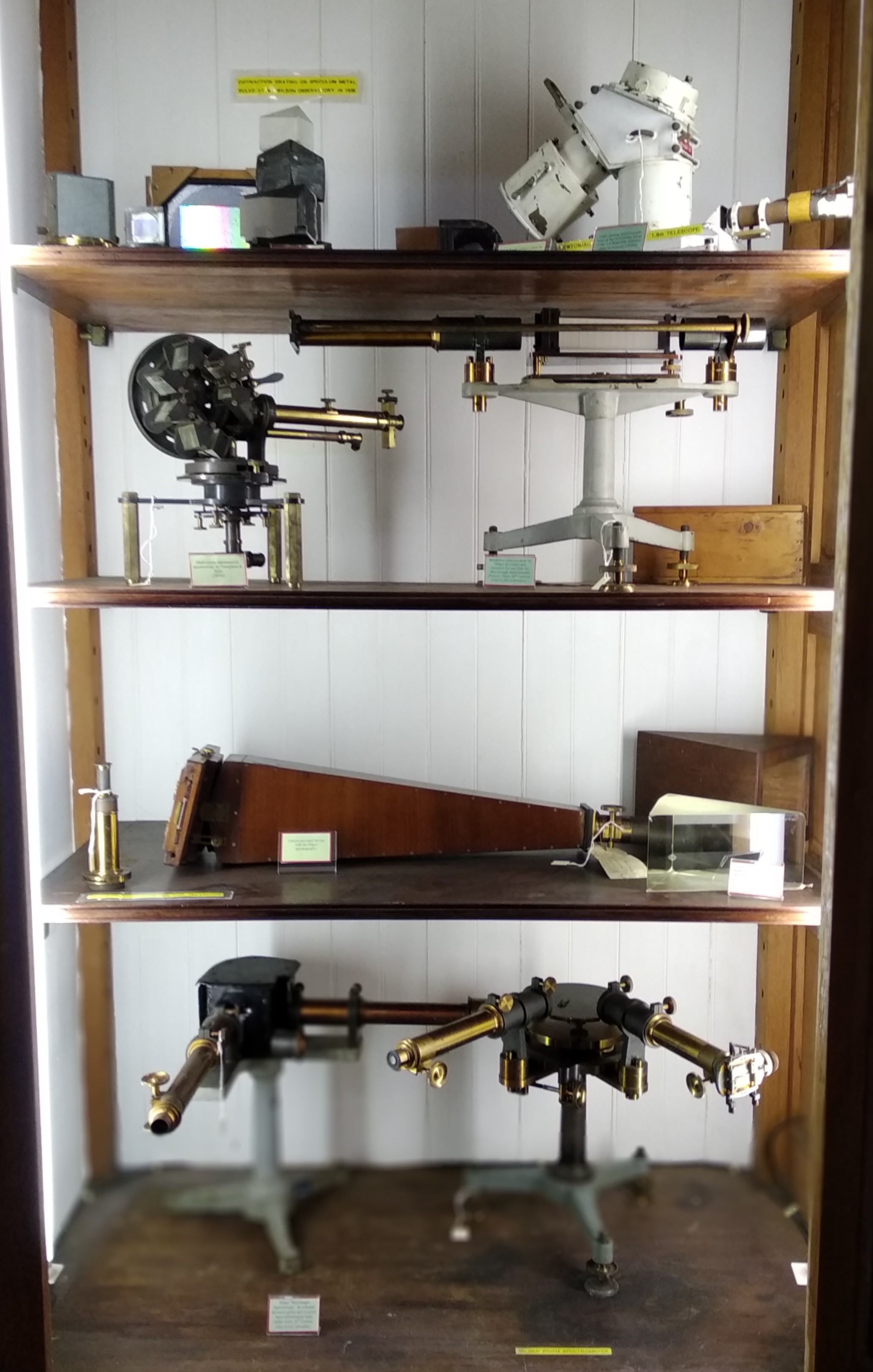|
The Museum contains a number of spectrographs and spectrometers that are used to analyse light. This is the science of "Spectroscopy" that forms one of the principal areas of Astrophysics. Most professional telescopes carry spectrographs (which are usually too big to show in a display like this one!). However, the white instrument on the top shelf is one that was formerly used on the 74-in (1.9m) telescope. The multi-prism instrument on the second shelf was used for examining the spectrum of the Sun in the 1870s. Most of the instruments on display were at one time used in this laboratory to compare earthly substances to what is seen in the spectra of stars. The element Europium was first discovered in stars from the McClean telescope by Joseph Lunt, one of the Cape astronomers, in 1905. Lunt also made several investigations in this laboratory. |
|
If the light from a star is passed through a prism or reflected from a diffraction grating (see examples on display) it is separated into its individual colours. The picture above is an example. If the spectrum is examined closely, it is seen that there are usually dark (or sometimes bright) lines across the colours. These lines are characteristic of individual elements and reveal what the star is made of. The recognition of known elements in the Sun was due to Kirchhoff and Bunsen in 1857, the same year as Darwin published his "Origin of Species". The lines are always displaced to some extent from the positions they would have in a laboratory experiment and this tells how fast the star is travelling towards or away from us. Spectroscopy was also done with the Giant Objective Prism (see link below). The presence of oxygen in stars was discovered by Frank McClean using an objective prism attached to the Astrographic telescope. |
| The Giant Objective Prism |
| The Darkroom |
| The laboratory |

